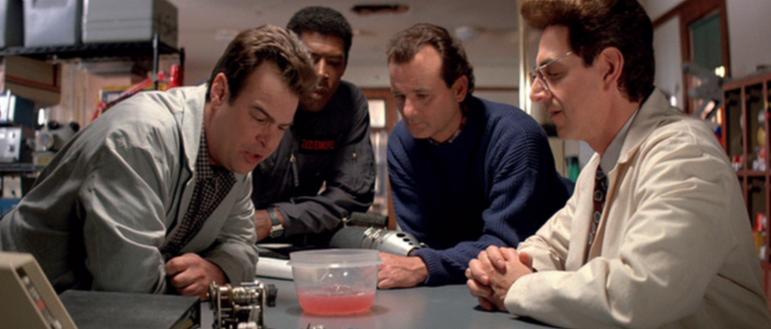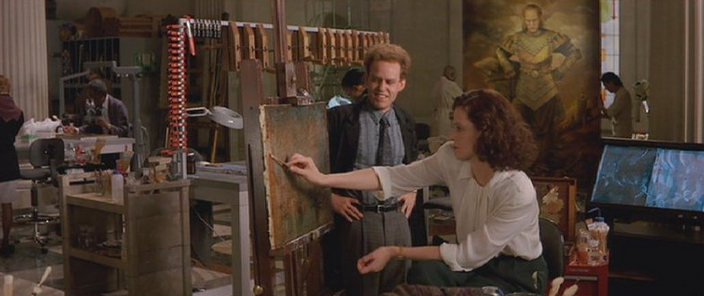After Ivan Reitman’s success with Ghostbusters in 1984, it took some cajoling to convince the team to return and make a sequel. While this week’s movie recommendation doesn’t succeed quite as well as the first in the series, Ghostbusters II (1989) nonetheless meets all the requirements for a wonderful Boxing Day spectacle in the run-up to New Year’s Eve.
Five years have passed since Gozer was ‘busted’ from the top of a Manhattan skyscraper. In the interim, Dana Barrett (played by Sigourney Weaver) has married and separated from an errant musician who has left behind a baby named Oscar for Dana to care after. The Ghostbusters have disbanded, and were forced into ignominy thanks to the lawsuits engendered by their wanton disregard for New York property during their battles with the paranormal.
But it appears that supernatural activity is beginning to resume in the city – moreover, it seems to take a targeted interest in young Oscar. It soon becomes clear that the demonic possessor of a painting curated at Dana’s art museum is none other than the spirit of a sixteenth-century tyrant named Vigo the Carpathian. Vigo’s design to re-animate himself on New Year’s Eve in Oscar’s body galvanizes the Ghostbusters to don their tan overall uniforms and nuclear-powered proton packs once more to save the city.
The underlying conceit is fairly similar in the sequel to what was found in the first film, but it is rendered more explicit here: the characteristic impatience and discourtesy among New Yorkers is a product not of their natural dispositions, but rather of supernatural forces. If good comedy must provide at least some biting commentary, the Ghostbusters series sets its sights on urban disruptions of social etiquette. In a nod to the very best scene from the first film, the Ghostbusters accost the mayor of New York (you may remember ‘Lenny’) with a plea to tackle the rise of paranormal activity; Venkman plaintively asks Lenny…
Have you been out on the street lately? Do you know how weird it is out there? We’ve taken our own headcount – there seem to be three million completely miserable assholes living in the tri-state area!
Venkman’s character hasn’t changed all that much – although at least he’s exchanged his “old, cheap tricks†for some “brand new, cheap tricks.†He remains witty, but never in a way that makes him seem astute. Instead, whether it’s as a host for a talk-show on psychics and quacks, or as the leader of the Ghostbusters, it’s never clear whether he knows he really might be just as much of a fraud as others think him to be.
As I wrote in my review of Ghostbusters, what made that film so special was that it perfected the typically uneasy blend of high-budget cinematography with improvisational comedy. What makes this sequel ever so slightly inferior is that Reitman couldn’t quite replicate that balance. The production values were pushed even higher (presumably once the studios came to expect a success similar to the prequel), and this meant a sacrifice in the lead actors’ ability to rely on the comedy chops that had made them mix so well in the first place. Although there’s no dispute that Murray, Aykroyd, Ramis, Hudson, and Moranis deliver the punch-lines expertly, ultimately it’s the newcomer to the cast, Peter MacNicol as the befuddled eccentric art director, who really steals the show.
The injection of even more slick production values works well in some of the more obvious ways, though. Special effects that were made in the original 1984 release now look dated in a way that the effects from this sequel don’t; there’s also a refreshing air of confidence to the production that comes from the sense that the cast and script are hitting their stride. If only they could have made as good a soundtrack as the original…
Enjoy this feel good film to close out the RBC recommendations for the year — see you in 2015!

